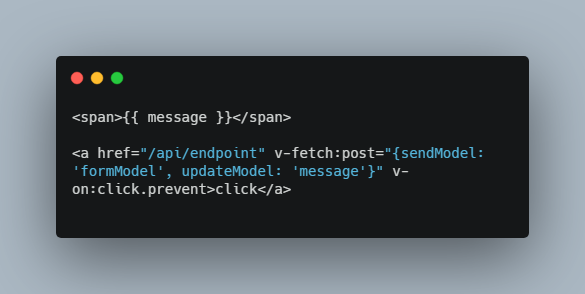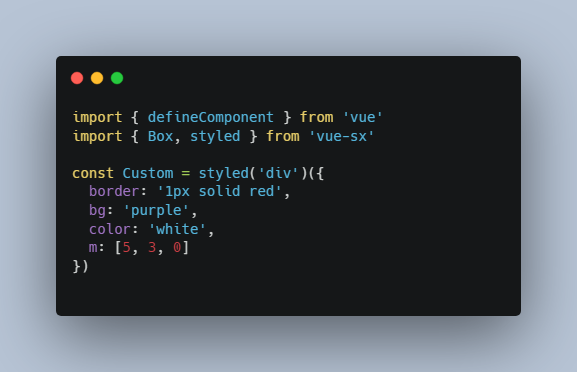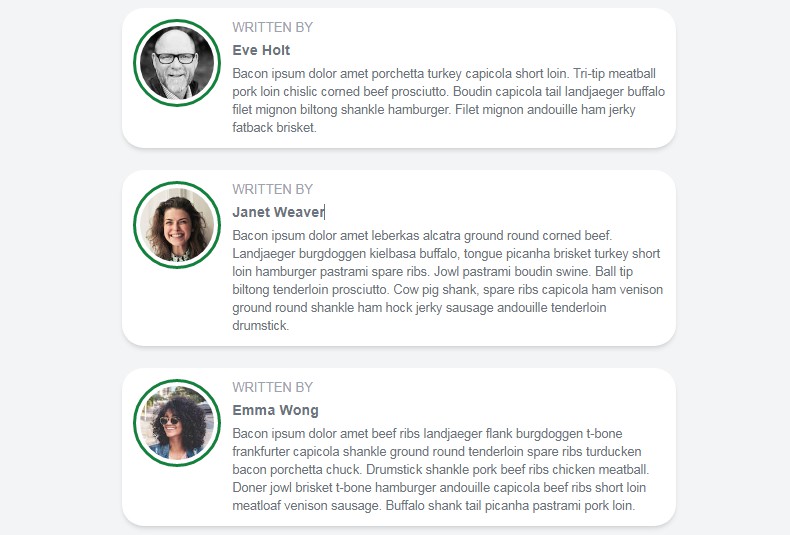fela-vue
Fela mixin for Vue designed for flexibility yet team-oriented.
Fela does the great job, but it has no idea how to cook it with Vue. This is what I've created after combining vue's :style and :class attributes to make apps dynamically configured and easiest to write and maintain.
USAGE
More about plugins. Several basic are already built in here!
More about enhancers.
I suggest to look at this one first to have nice-looking classes during development.
Usage with literal css (lit-css) from this package
In the options object below you can also add other Renderer options
// All of the options are optional.
const options = {
// Default styles to mix. Does not mix if omitted.
// Have a look at the example below to see it in action.
// Either pass a function (then key would be `fdef`):
defStyles: (componentInstance) => ({ colors: { cyan: 'cyan' } }),
// ... Or an object with your own key:
defStyles: {
key: 'fdef',
value: (componentInstance) => ({ colors: { cyan: 'cyan' } })
},
// Name of styling method. Defaults to `f`.
method: 'f',
// Additional fela plugins.
plugins: [],
// Additional fela enhancers.
enhancers: [],
// Preset configurations.
preset: {
// Config for fela-plugin-unit. Same defaults ('px', {}).
unit: ['em', { margin: '%' }]
},
// SSR status.
ssr: false
}
const renderer = new Renderer(options)
// Use globally
Vue.mixin(renderer.mixin)
// ... Or per module
export default {
mixins: [ renderer.mixin ],
// ...
}
EXAMPLES
** same options object as above **
WITHOUT SSR
main.js
import Vue from 'vue'
import { Renderer } from 'fela-vue'
Vue.mixin( (new Renderer(options)).mixin )
WITH SSR
entry.server.js is the same as entry.client.js
import Vue from 'vue'
import { Renderer } from 'fela-vue'
// OR const { Renderer } = require('fela-vue')
const renderer = new Renderer({
...options,
// SSR status to `true`.
ssr: true
})
Vue.mixin(renderer.mixin)
Then just put renderer.style into your template.
Component example
MyComponent.vue
<template>
<div :class="f('wrapper')">
<span :class="f('one')"> It's green! </span>
<span :class="f('two')"> It's cyan! </span>
<span :class="f('three', {color: 'white'})"> you don't see me! </span>
<span :class="f({color: 'yellow'})"> I do it by myself! </span>
<span :class="f('one two, bold')"> Combined classes by commas and spaces </span>
<span :class="f('bold my-kebab')"> And kebab-case! </span>
<span :class="f('bold myKebab')"> The same! </span>
<span :class="f('button one')">
If class is not in local style(), it will be taken from defaults (defStyles), if present.
Here's button could be taken from there, then merged with `one`
where is `one` is in priority: right to left principle.
</span>
<div v-for="i in [0,1,2]">
<span
:class="f((i) => ({color: ['green', 'blue', 'yellow'][i]}))"
> This way is OK too. </span>
</div>
</div>
</template>
<script>
// Uncomment to use literal css: css`...`
// import { css } from 'fela-vue'
export default {
computed: {
style() {
// Or any other key in `options.defStyles.key`.
const { colors } = this.fdef
// Also, it's OK to return one css`...` with all classes included.
return {
one: {
color: 'green'
},
two: {
color: colors.cyan
},
three: ({color}) => {
fontWeight: 'bold',
color
},
bold: () => ({
fontWeight: 'bold'
}),
// 'my-kebab' is also valid if the same in the template.
myKebab: {
color: 'purple'
},
anotherClass: css`
background: grey
`,
...css`
.other-class {
margin-top: 44; // still ok for fela. will be 44px.
// you can comment a whole line,
margin-left: 22 // this's OK too.
/* block comments are also supported. */
:hover {
// no colons and semicolons are ok.
background grey
}
}
.anotherOne {
padding: 15
}
`
}
}
}
}
</script>
It's better to make this computed in the end of a component definition or make a const variable at the bottom and return it from the computed prop.
Also, It's very handy to make snippets for adding style() {} to computed.




